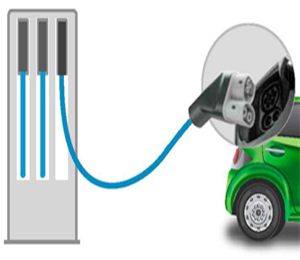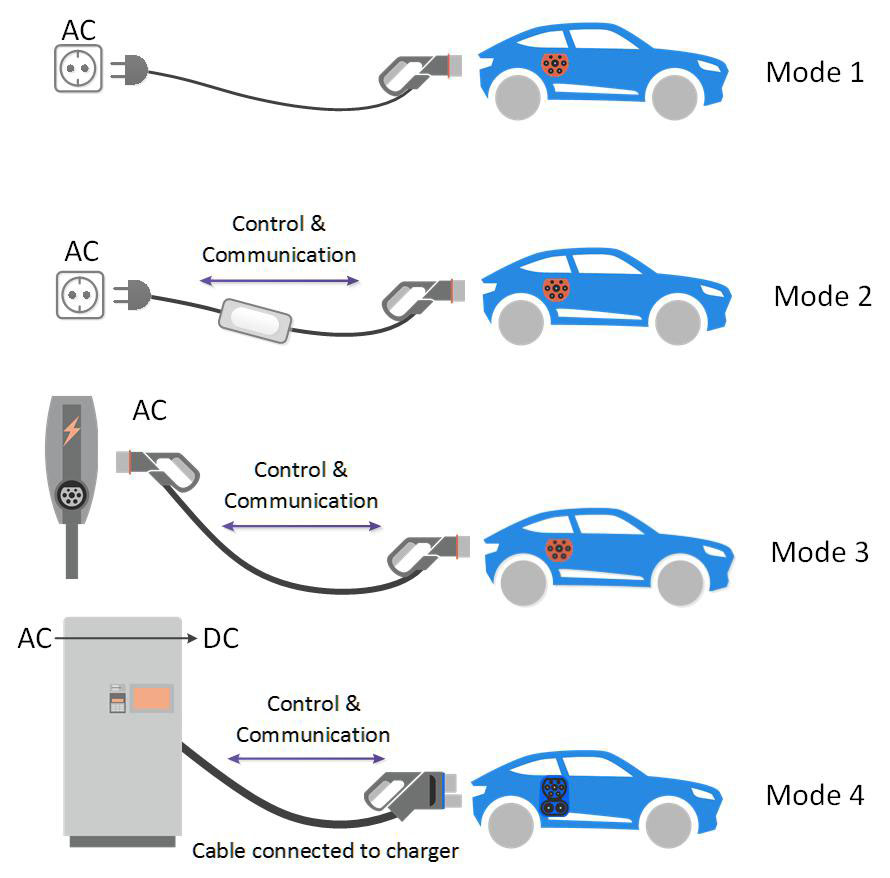
Electric Car Charging Modes
Level1 EV Charger
Level 1 charging happens when you charge an electric vehicle (EV) using the charger included with the car. These chargers can be plugged with one end into any standard 120V outlet, with the other end being plugged directly into the car. It can charge 200 kilometers (124 miles) in 20 hours.
MIDA EV Chargers do not provide this technology and recommend their customers not to use it.
It is a recharge that occurs in alternating current (CA), up to 16 A, through a domestic or industrial socket and there is no protection and communication with the vehicle.
Mode 1 is typically used for light vehicles, for example electric motorcycles.
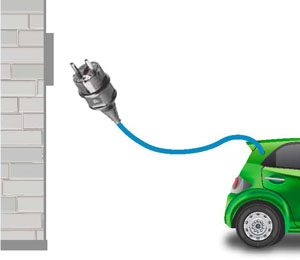
Level 2 EV Charger
Level 2 chargers are sold separately from the car, although they’re often purchased at the same time. These chargers require a slightly more complicated setup, as they are plugged into a 240V outlet which allows charging 3 to 7 times faster depending on the electric car and the charger. All of these chargers have an SAE J1772 connector and are available for online purchase in Canada and the USA. They usually have to be installed by an electrician. You can learn more about level 2 charging stations in this guide.
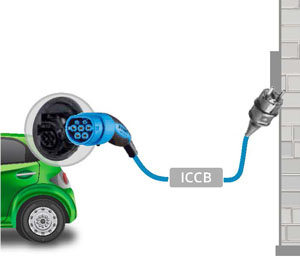
Mode 3 EV Charging
Level 3 Public Chargers
Lastly, some public stations are level 3 chargers, also known as DCFC or DC Fast Chargers. These charging stations are the quickest way to charge a vehicle. Note that not every EV can charge at level 3 EV Charger.
For fast charging, the CHAdeMO and SAE Combo (also called CCS for “Combo Charging System”) are the most used connectors by electric cars manufacturers.These two connectors are not interchangeable, meaning a car with a CHAdeMO port cannot charge using an SAE Combo plug and vice versa. It’s kind of like a gas vehicle that can’t fill up at a diesel pump.
The third important connector is the one used by Teslas. That connector is used on level 2 and level 3 Supercharger Tesla charging stations and are only compatible with Tesla cars.
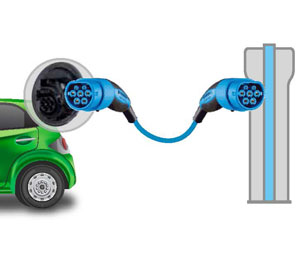
Mode 4 DC Fast Charger
Mode 4 is often referred to as ‘DC fast-charge’, or just ‘fast-charge’. However, given the widely varying charging rates for mode 4 – (currently starting with portable 5kW units through to 50kW and 150kW, plus the soon to be rolled out 350 and 400kW standards)
It is when the recharge is through a charge point in direct current (CD) which is equipped with control and protection functions.It can be equipped with Type 2 charging plug for currents up to 80 A, or with Combo Type for currents up to 200 A, with a power up to 170 kW.
